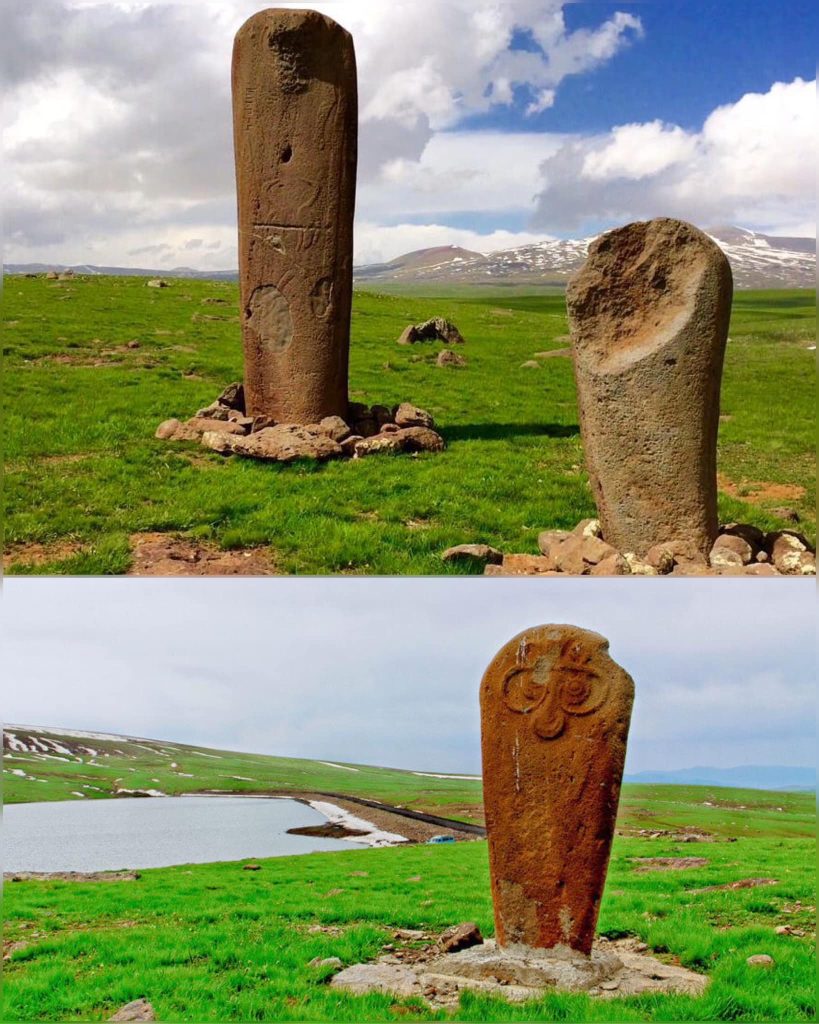The strategic placement of the vishapakar stones near vital water sources—rivers, lakes, and springs—offers compelling insight into the values and survival strategies of ancient agricultural societies. These monumental stones, often towering and meticulously carved, were far more than mere decorations or boundary markers. Their locations underscore the deep reverence early communities held for water, the lifeblood of both people and crops. Each vishapakar bears elaborate carvings featuring images of fish, bulls, and fluid, wave-like patterns, all symbolizing the essential and sacred role of water in sustaining life and ensuring a successful harvest. These symbols were not chosen randomly; rather, they reflected a conscious effort to honor nature’s generosity while also invoking its continued favor. The vishapakars were sacred spaces—places where rituals were performed to attract rain, foster fertility, and secure the prosperity of the community. In this context, the stones reveal how ancient people sought to harmonize with the natural world, depending on its forces for survival and prosperity.

The name “vishapakar” itself connects these ancient artifacts to Armenian mythology, where the term “vishap” refers to powerful dragon-like beings. In myth, vishaps were believed to wield control over storms, rain, and bodies of water, embodying both the nurturing and destructive potential of nature. These dragons were viewed with a complex mix of awe, fear, and reverence. They could be benevolent guardians of water, bestowing life-sustaining rain, or fearsome forces capable of unleashing floods and devastation. The vishapakar stones, massive in scale and rich in imagery, likely served as ceremonial focal points where communities gathered to appease these formidable entities or to seek their aid in channeling elemental forces for the greater good. The intricate carvings, some of which resemble stylized dragons or serpents, reflect this deep mythological connection. Whether seen as protectors or adversaries, the vishaps held immense sway over the people’s perception of their environment, and the stones acted as a medium through which humans sought to communicate with these elemental spirits.
Yet, the significance of vishapakar stones extended beyond mythology. These monoliths played multiple roles in the fabric of ancient Armenian life. They served as territorial markers, delineating the boundaries of tribal lands and asserting claims to valuable resources like water and fertile soil. They also functioned as memorial monuments, possibly honoring revered ancestors or notable leaders. Most prominently, the stones were sites of religious and communal gatherings. Their imposing presence and thoughtfully selected locations suggest that they were central to major ceremonies. Offerings may have been made at these stones, and prayers or chants likely echoed through the valleys as people sought the vishaps’ favor. The stones unified spiritual, social, and practical life, acting as a bridge between the physical needs of the community and their spiritual aspirations. They offer a window into how ancient people intertwined the natural world with their belief systems, finding meaning and connection in every stream, stone, and storm.
Despite extensive scholarly attention, the full story behind the vishapakar stones remains shrouded in mystery. Researchers have proposed various theories about their purpose—ranging from grave markers to symbols of ancestral worship—but no single explanation has been definitively proven. What is clear, however, is that these monuments played a vital role in linking the tangible world with the spiritual realm. Their consistent presence near water, their uniform design elements, and their placement in communal spaces suggest a deep, possibly ritualistic significance that goes beyond mere practicality. These stones are enduring archaeological enigmas, each one hinting at a broader narrative that may never be fully uncovered.
What fascinates modern archaeologists and historians is not just the mystery surrounding the vishapakar stones, but also what they reveal about human ingenuity, belief, and adaptation. These stones demonstrate a sophisticated understanding of both the environment and the intangible forces that ancient people believed governed it. They offer evidence of how early societies coped with the uncertainties of nature by creating structures that could channel both hope and reverence. In a world without modern science, such monuments served as tools for understanding and influencing the world around them, embodying both fear and faith.
The vishapakar stones stand as silent witnesses to a time when human beings sought not only to survive in a challenging environment but also to find harmony with it. They remind us of humanity’s long-standing desire to comprehend the elements, to seek meaning in nature’s rhythms, and to leave behind lasting markers of our journey. Today, they continue to inspire awe and curiosity, serving as timeless symbols of our ancestors’ attempts to navigate a world full of wonder and uncertainty. Through them, we glimpse a past that, though distant, still resonates with the universal human quest to understand the forces that shape our lives.





